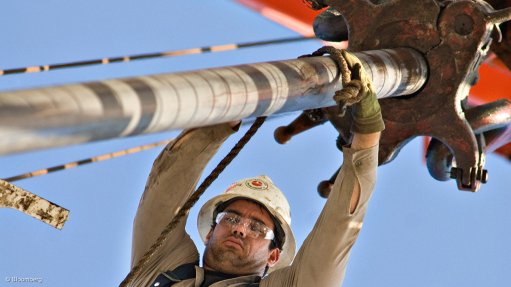
Photo by: Bloomberg
As ASX-listed Challenger Energy prepared to enter the shale gas exploration space, the South Africa-focused junior was in advanced negotiations to secure a strategic partner.
The company was currently focusing on leveraging its shale asset in the Karoo basin to build a long-term sustainable company with a quality portfolio.
As a “first mover”, Challenger, through its subsidiary, Bundu Gas and Oil Exploration, applied for a licence to explore an area of about one-million acres centred around the Cranemere CR 1/68 well, which, during a 1968 drilling programme, produced a gas flow rate of more than eight-million cubic feet a day from a vertical, unstimulated well.
After initial testing, the well was plugged and abandoned and no further exploration work had been carried out on the project area since then.
“This is an unusual and highly promising indicator of the area’s potential,” Challenger MD Robert Willes commented.
The group had short-term ambitions of securing exploration rights in the Karoo basin, which were pending subject to the finalisation of a new regulatory framework, as well as of finding a strategic partner for the project.
“Our aim is to execute a farm-in that will make both financial and strategic sense – in other words, to create a strong partnership to take the business forward.
“I cannot comment in detail, but the significance of our position in South Africa is certainly recognised and we continue to make good progress,” said Willes.
Once an exploration right was granted, Challenger’s technical plan would be to start with studies, which could include reprocessing the vintage seismic data.
“This would likely be followed by drilling a limited number of simple core holes prior to drilling [and] completing and fracture-stimulating a vertical well in order to assess the flow characteristics of the different shale horizons,” he explained.
The targeted well would likely be drilled a year after securing the exploration rights, owing to the initial work required to select a suitable site, the various approvals that might be required and the need to reach agreement with any affected landowners.
“Significant investment is required along the way of course, but with an application pending for around one-million acres surrounding a well in which gas flowed to surface, the starting position looks very interesting,” Willes noted.
The group had, thus far, only sought to raise modest sums for working capital purposes and its future funding strategy would be influenced by the outcome of the farm-in discussions.